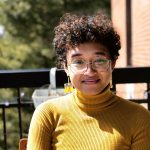Mneesha Gellman is a political scientist and longtime educator of students both inside and outside prisons. In 2017 she founded the Emerson Prison Initiative (EPI) as a college-in-prison program. Now offered at Massachusetts Correctional Institution at Norfolk, EPI provides a pathway for incarcerated students to earn a bachelor’s degree from Emerson College. Since its launch, EPI has admitted three cohorts of students, granted degrees to eleven, and matriculated four students to Emerson’s Boston campus after their release.
In a new anthology, Unlocking Learning: International Perspectives on Education in Prison, Gellman and her coeditor Justin McDevitt explore what the United States can learn from other countries’ views on the education of incarcerated individuals. When I spoke with Gellman for this interview, she emphasized the importance of understanding international approaches to education in prison. Not only does such study offer valuable insights for practitioners in the field, but it also makes clear that the U.S. culture of punishment and imprisonment is unique in the global arena—and shows the potential of education to disrupt these entrenched carceral cycles.
Daven McQueen: What brought you into education in prison work?
Mneesha Gellman: In the very early 2000s, I met Max Kenner as he was launching the Bard Prison Initiative, which offers incarcerated New Yorkers the ability to earn a bachelors through Bard College. I became an early volunteer with the Bard Prison Initiative while I was in college and so have followed the work of that program very closely. When I was hired as a professor at Emerson College, I decided to try to create a sister program, following a lot of the best practices that the Bard Prison Initiative has laid out. And so, Emerson Prison Initiative (EPI) was born.
In 2016 we first created a guest lecture series, where faculty went to the prison and presented their expertise. It gave people a chance to test out whether they were interested in being in the college classroom, and it gave our faculty a chance to test out what it felt like to go behind the wall with their content. By 2017 we were able to launch a program where students were earning college credits. By 2021 MCI–Concord (the first prison where EPI started) was accredited as a campus of Emerson College and our first twenty admitted students were matriculated into the degree-granting program. Since then, we’ve admitted three cohorts of students, sixty in total.
McQueen: Unlocking Learning is your second anthology about prison education. The first, Education Behind the Wall: Why and How We Teach College in Prison, was published in 2022 and focused on the experiences of teaching and learning in U.S. prisons. This new book uses case studies to build up a kind of comparative perspective on the current state of education in U.S. prisons. What was the impetus behind creating it?
Gellman: Education Behind the Wall originated from a very specific need we saw among faculty who potentially wanted to teach in prison, or people who wanted to be teaching assistants, to have more insight into what that process is like. We’ve been thrilled, though, to see that it’s found a much wider audience among people interested in the ins and outs of actually running a prison education program.
It was through Education Behind the Wall that I met Justin McDevitt, who, like me, is a comparative social scientist. We both wanted to know more about what other countries are doing differently in terms of providing educational access to people who are incarcerated. Answering our own question took the form of Unlocking Learning. I don’t want to say that it presents a diverse array of case studies, because the majority of them are European, with the exception of Mexico and El Salvador, but even among the European case studies, there’s a lot of different angles on what it means to have educational access.
A big factor in the difference is certainly the population size of countries’ prison systems. One of the book’s case studies is about Norway, for example, and the entire country of Norway incarcerates a total of 3,000 people. The populations of a number of individual U.S. prisons is greater than that. But scale is not the only differentiating factor. Norway also just thinks about the right to education very differently. People who are incarcerated there maintain the right to be educated through the school system of the place that they are from. Teachers from the school district of origin of the incarcerated person will come to the prison to provide educational instruction to that person, because they’re still seen as a constituent of that educational arena. That is the opposite of how things operate in the United States, where once you’re incarcerated, you basically lose the rights of citizenship, are stripped of your connections to your community, and what little you’re offered is provisioned through the DOC, including minimal educational opportunities.
In the second chapter of Unlocking Learning, education researcher Maria McKenna looks at the way that incarceration is in part the end result of a failed public education system. College-in-prison programs in the United States deal with so much educational trauma. People come into the classroom having seen formal educational spaces as sites of ridicule, belittlement, and undermining of self-esteem. Part of our work is to create safe educational spaces where people can develop different relationships with educational programming, which is different from many of the other countries in the book, notably in Europe where public education tends to be less a site of chronic disinvestment.
McQueen: Were there any lessons from other countries that you found particularly exciting or interesting, or that present new possibilities for prison education work in the Unites States?
Gellman: In the United States, our punitive approach to prison is dehumanizing and sets people up to fail when they reintegrate. This system takes away people’s sense of dignity and their sense of purpose, for example by creating endless blockades against them being able to continue parenting their children. It denies people an ability to have a sense of purpose or meaning that could come from continuing to play a role in networks of family and loved ones on the outside. And it doesn’t have to be that way. Here in Massachusetts, where we have one of the smallest prison populations, we also have one of the largest segments of the population serving life sentences or extremely long sentences. And the data shows that people are far less likely to commit a new crime after a certain age based on what we know about brain science and prefrontal cortex development. So, for example, the European approach of short sentences and really emphasizing support for rehabilitation creates a different kind of public safety, one that the United States can learn from.
It’s important, though, to not have an idealized vision of incarceration in Europe. For example, there’s a chapter on Italy that focuses on incarcerated immigrants and what it means to be an immigrant in the carceral system there. Social stratification is happening all the time and across a lot of different identity factors, so for incarcerated people who are not Italian, what it means to access education is a different starting point than what it would mean for someone who is Italian and is already fluent in Italian.
More from our decarceral brainstorm
Every week, Inquest aims to bring you insights from people thinking through and working for a world without mass incarceration.
Sign up for our newsletter for the latest.
Newsletter
McQueen: Readers of both Education Behind the Wall and Unlocking Learning might reasonably conclude that one takeaway is the need to radically scale up programs such as EPI and the Bard Prison Initiative. Where is your thinking currently about the value of expanding access to education in prison versus trying to change the landscape of incarceration?
Gellman: This is a both/and answer, because we need a whole range of changes to happen. There are those of us doing the intervention within the system as it currently is, and seeing the need to scale up our work. There are also people who are devoted to advocating for decarceration, for reducing the number of people who are in prison. That is happening significantly in Massachusetts, actually. The state has decarcerated by half just in the time since I started EPI. When we began in 2016, there were about 12,000 people in the system. Now there are about 6,000 people who are physically incarcerated by the DOC. But that’s still 6,000 people in prison—that’s double the incarcerated population of Norway.
We need to have some people addressing the systemic landscape and other people looking at how we can increase and improve what we’re able to offer in terms of educational interventions behind the wall. At EPI, we’re thinking about how we can run more frequent admissions so that more people can have access to the BA pathway. We want to add a master’s program, so that people with long sentences who complete the BA still have educational achievements they can continue to work toward. We want to offer pedagogical training so that people can become tutors to other incarcerated students. There’s a chapter in Unlocking Learning that looks at peer learning and peer support in prison. That’s really important because other incarcerated people are excellent sources of information for currently incarcerated people. Regardless of what the system looks like, reframing incarcerated people as essential in education processes, rather than as obstacles or impediments, is a significant change.
McQueen: Beyond access to academic programs and degrees, which are obviously powerful, what do education in prison programs offer incarcerated people? What are the impacts more broadly?
Gellman: In the conclusion to Unlocked Learning, which Justin and I coauthored, we have four points about lessons we draw from our comparative study of education in prison.
First and foremost, education is a fundamental right of all people, and people who are currently incarcerated are no exception. Basic education should be free and universally provided in prison, and vocational training and higher education ought to be accessible as well. To truly make safer societies, we must interrupt ongoing structural injustices that exclude some people from access to living dignified lives. Educational access is one such intervention.
Second, a key takeaway is that education is a crucial part of helping people reintegrate into society upon release from prison. In fact, as Chester Lee argues in his chapter on the Netherlands, reintegration must be the starting point from which we approach educational efforts in the first place. Education allows incarcerated people to enter a workforce that may have previously been closed to them.
Third, education is most effective when combined with work experience and vocational training. As several authors point out, only a holistic approach will be effective in preparing people for reentry.
Fourth, education alone is not enough to guarantee success by any measure. The work of education in prison does not exist in a universe of its own. It must operate in communication with partners and with an eye toward opportunities for employment after release. Education in prison will be more effective when it’s seen as part of a new approach to public safety, one that dismantles previous barriers to upward socioeconomic mobility, such as institutional racism, classism, gang profiling, and educational tracking systems. Educational access is part of centering the holistic well-being of people who are incarcerated, and it includes taking a hard look at systemic reasons why people may not have had that access prior to incarceration.
Image: Akin Cakiner/Unsplash



